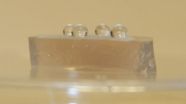"We were making it up day to day," Hayward said of BP's rescue plan. Together with chairman of the board, Carl-Henrik Svenberg, he was held responsible for 11 dead and 17 injured workers. According to the New York Times, five million barrels of oil leaked into the ocean outside the coast of Louisiana between April and August 2010.
A lack of safety procedures was identified by the oil spill investigation commission, set up by President Barack Obama, as a determining factor behind the disaster. The three companies involved in the accident - BP, Transocean and Halliburton – were all accused of having cut corners in order to complete the well. At the time of the blow-out, this job was five weeks behind schedule. Five survivors talked to CNN about a corporate culture in which safety warnings were routinely ignored.
"Major accidents such as the Deepwater Horizon disaster in the Gulf of Mexico could also happen in the North Sea," says Preben Lindøe, professor of societal safety and security at the University of Stavanger, Norway.
"But strong, organizational barriers between the oil industry, trade unions and the Petroleum Safety Authority Norway reduce the risk," he adds.
Together with his colleague, associate professor Ole Andreas Engen, he is part of the Robust Regulation in the Petroleum Sector team. The four-year research project, funded by the Norwegian Research Council, also involve the independent research group Sintef and the University of Oslo, in addition to legal expertise affiliated with Boston university.
Different practice
The researchers compare oil industry regulation in the USA, Great Britain and Norway.
"There are hardly any unions in the Gulf of Mexico. Tripartite collaboration, as it is practiced on the Norwegian continental shelf, is therefore impossible," says Lindøe.
The US regulator, Minerals Management Service, carries out inspections based on a fairly meticulous body of rules. Inspectors are transported to offshore installations, equipped with long and detailed check lists.
By comparison, Norwegian regulation is based on internal control. The authorities thereby rely on the companies administering their safety work themselves. While the Norwegian model is based on trust – built up over time – and the sharing of experience and information, the situation in the US is almost the opposite, according to Lindøe.
"The reason this model has succeeded in Norway, is because the parties have been able to fill the concept of internal control with substance. Both employers and unions are involved in developing industrial standards and good practice which can be adhered to," he says.
Close shave in the North Sea
But recent near-accidents in Norway may potentially have become disasters. In May 2010, Norwegian oil major Statoil had problems during drilling operations at its Gullfaks field in the North Sea. While drilling a well from the Gullfaks C installation, gas entered the well and reached the platform deck. According to the company's investigation report, only luck prevented the incident from becoming a much more complicated subsea blowout.
The Petroleum Safety Authority shared this conclusion, and pointed out that the incident could easily have evolved into a disaster. It issued four enforcement notices to Statoil, and the company was reported to the police by environmental group Bellona. International media compared the Gullfaks incident to the Deepwater Horizon accident.
"The public's attention is triggered by such incidents, and we are made aware of society's unpredictability. When perceived threats are referred to by the media, societal safety is pushed up on the agenda. The attention paid to this subject varies, which lies in its nature. When safety work succeeds, its success is proved by the non-occurrence of serious incidents. When nothing happens, we may become less attentive and sloppier in adhering to routines and procedures," says Ole Andreas Engen.
"When attention fades, accidents happen more easily, and are followed by increased awareness. Societal safety is thus a perpetual Sisyphus effort. It is a big challenge for all organizations to maintain a high level of safety awareness over time," he says.
Robust regulation
The researchers point to another example: A gas leak at the North Sea field Snorre in 2004, when an accident equivalent to Deepwater Horizon was only a spark away. But in spite of a number of near-accidents, Norwegian regulation is still more robust than the US'.
The petroleum industry in Norway has gone through several critical phases in its history. Gradually, the parties involved have learned to trust each other. A robust system like this is able to withstand a blow. This is not the case in the USA, where the authorities have a much more difficult task in monitoring regulations. There are strict requirements for new regulations to undergo cost-benefit analyses, which must be submitted to the President's office, the researchers explain.
Moreover, the regulation of safety and the work environment is divided between two governmental agencies. The US Coast Guard is the controlling authority of personnel safety on offshore platforms, says Lindøe.
"Workers don't enjoy the same legitimacy with regard to their role in safety work as they do in Norway," he adds.
According to Lindøe and Engen, it is common practice in the US to look for scapegoats, and pin the blame for accidents on them, instead of changing the systems. In Norway, the parties are more likely to come together to find out how systems and routines may have contributed to an employee making a mistake. The researcher sum up the lessons learned after the Gulf of Mexico disaster:
"The Deepwater Horizon accident has uncovered some evident weaknesses within US safety regulation. The Government being restrained from intervening directly with the industry is one of them. To the Norwegian industry, this accident and the near-accident on Gullfaks C, should serve as reminders of the importance of maintaining the foundation pillars of the Norwegian safety management system: Effective and well qualified authorities, and clear guidelines for cooperation and trust between the parties," Lindøe concludes.
INFORMATION:
END

